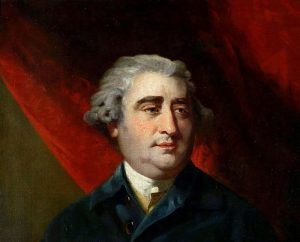Runnymede Borough Council has agreed to release thousands of pounds to help buy a “significantly important” oil painting for its museum. The painting is an oil on canvas portrait of Britain’s first foreign secretary and one-time leader of the Whig Party, Charles James Fox MP.
Mr Fox, who spent his final years in St Ann’s Hill, Chertsey, was a strong supporter of parliamentary reform and advocated for religious tolerance and individual liberty. He was a particularly vocal campaigner for the abolition of slavery and introduced what was to become the 1807 Abolition of the Slave Trade Act which made it illegal for British ships and British subjects to trade in enslaved people.
The portrait has been offered to the museum for £5,000 and half of the money for its purchase will come from donations, with the rest from the council’s museum after Runnymede Borough Council’s corporate management committee signed off the move.
Emma Warren, curator of Chertsey Museum, told the Thursday June 19 meeting: “We’ve been given the opportunity to purchase an original oil painting, quite a large item, of one of the borough’s, if not the country’s, unsung heroes.” She said the money would come from the museum’s own fund which had been “built up over many many years and can only be used for the benefit of the museum’s collections.”
“In my time at Chertsey Museum, which is 23 years, we’ve only used the purchase fund four times which is why it’s healthy. It’s normally kept for items of significant importance which I believe this painting to be, given we only have a couple of portraits of Fox and no original artworks. I could talk literally for hours about him. He is important not just to Chertsey where he spent his final years living on St Anne’s Hill. Normally I mention his debauched young life with the women and gambling but I was told to skip over that and concentrate on the important bit as to why he was our unsung hero.”
Reports presented to the meeting said Mr Fox, who was known as the Man of the People, first came to Chertsey in 1783 when Elizabeth Armistead, who would become his wife, invited him to join her at her home in St Ann’s Hill. The museum’s collection features letters from Mr Fox and gives an insight into his life on the hill. He was said to have taken up sheep rearing and learned about planting requirements for crops.
Mrs Warren added: “He was a Whig politician, had an unwavering support for liberty and parliamentary reforms and anti-slavery principles. Many of his views were quite ahead of his time. He spoke out at length against anti-government overreach.”
The image produced here is NOT the one the subject of this report.
Image: Joshua Reynolds portrait of Charles James Fox- pl.pinterest.com, Public Domain, https://commons.wikimedia.org/w/index.php?curid=48763729 This is not likely to be the portrait that is the subject of this article. We have been waiting for details from the museum.


